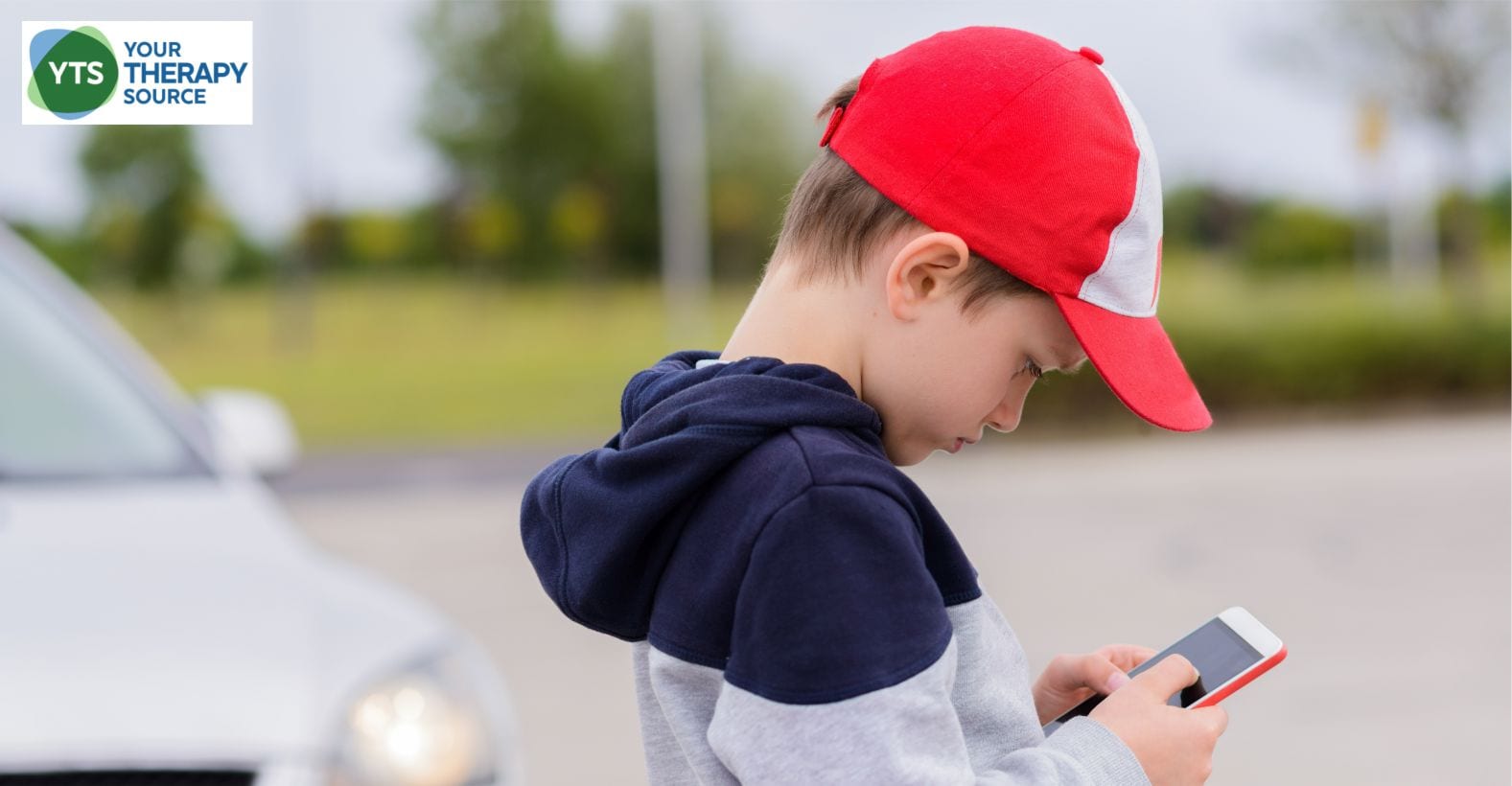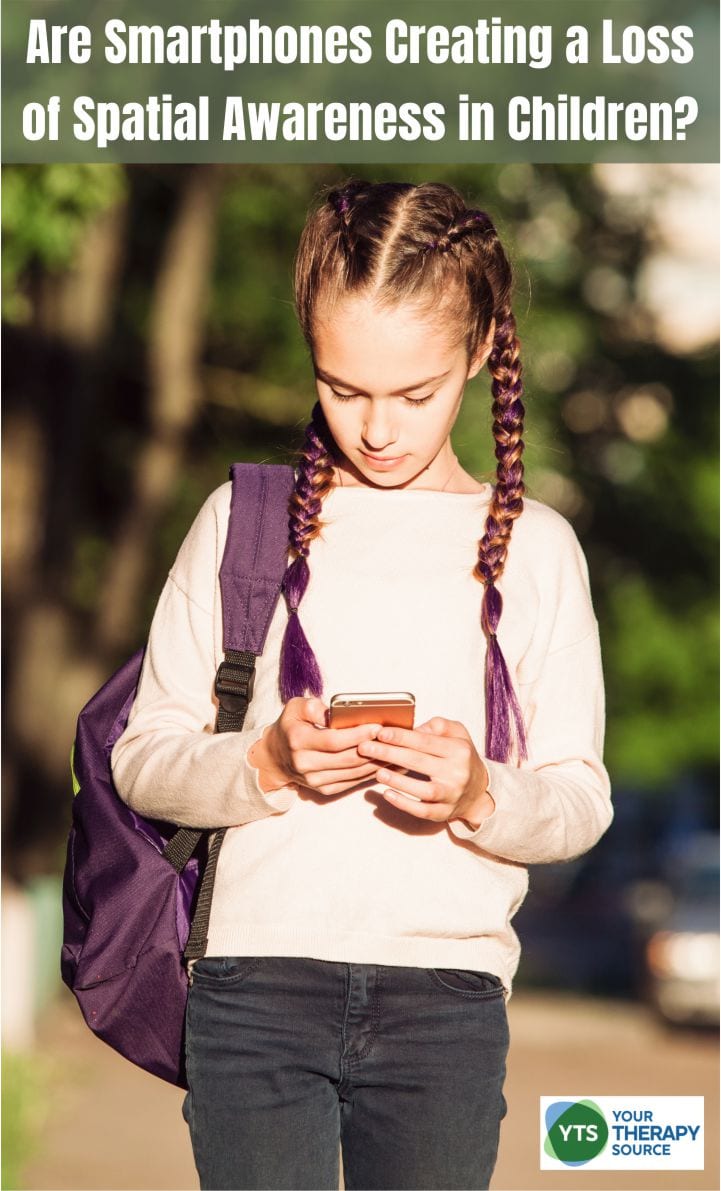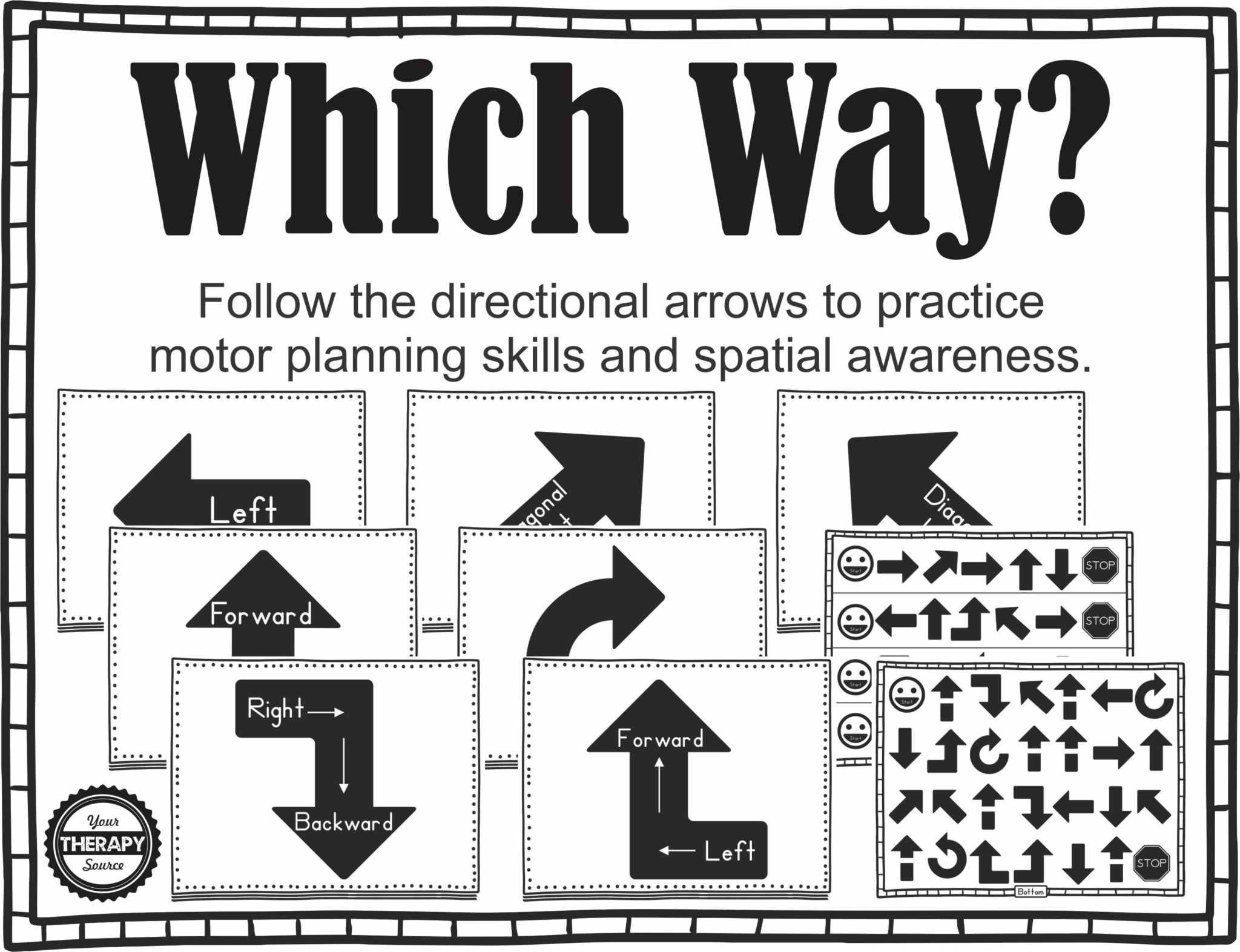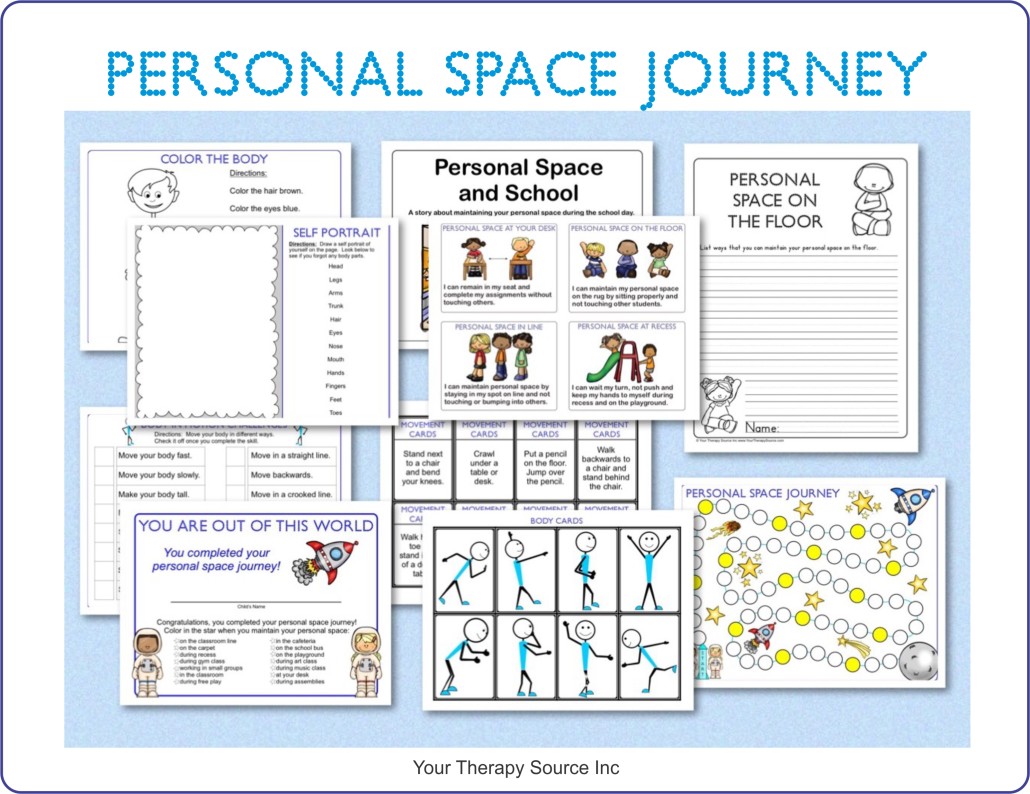Are Smartphones Creating a Loss of Spatial Awareness in Children?

Smartphones and tablets are now a part of daily life, even for very young children. Many parents are amazed at how easily toddlers swipe and teens navigate with GPS. But some are starting to wonder: is all this screen time affecting how children understand and interact with the physical world? Are smartphones creating a lack of spatial awareness in children?
Have you seen children who bump into their peers? Maybe they have trouble determining their left from their right? Perhaps you ask them to walk somewhere and they are completely unfamiliar with how to get there even though they have been there many times before? More and more children are using smartphones for longer hours and at a younger age. Overuse of technology in children has been associated with many negative factors such as decreased physical activity, decreased social skills, and poor sleep quality. Is it possible that smartphones are creating a loss of spatial awareness in children?
Recent research shows that heavy smartphone use, GPS reliance, and screen time may be linked to reduced visual-spatial skills, balance, and peripheral vision. These abilities are essential for safe movement, academic success, and independence.
What Are Visual-Spatial Skills?
Visual-spatial skills help us understand where we are in space and how objects relate to one another. These abilities are important for problem-solving, STEM learning, and even social interactions. Children use these skills to:
- Navigate their school or neighborhood
- Build with blocks or puzzles
- Understand maps or diagrams
- Judge distance and direction
What the Research Says on Screen Time and Spatial Abilities
Studies show that excessive screen use, especially in early childhood, may delay or weaken spatial abilities. Children who had less screen exposure and more physical play scored better on spatial tasks.
- In a 2024 study of preschoolers, children with higher screen time had lower visual-spatial scores than those with limited use (Coulanges et al., 2024).
- A 2023 Japanese study of over 7,000 children found that infants with 4+ hours of screen time per day were more likely to have delays in problem-solving and communication by age 4 (Takahashi et al., 2023).
Not All Screen Time Is Equal
Interactive, educational apps may be less harmful—or even helpful—compared to passive video watching.
- In the preschool study, children who used spatially engaging apps with parent involvement did not show the same delays (Coulanges et al., 2024).
- Games like Minecraft or puzzle apps may support spatial reasoning through play (AlWhaibi et al., 2023).
Still, these activities should not replace real-world movement and play.
The Role of the Vestibular System
The vestibular system in the inner ear helps the brain detect motion and maintain balance. Smartphones encourage sedentary behavior, which reduces opportunities to build these skills. It’s developed through movement like:
- Spinning
- Climbing
- Balancing
- Jumping
Lack of active play may limit vestibular development.
- A 2023 review found that limited vestibular stimulation can impact both balance and cognitive growth (Uloziene et al., 2023).
- Children who participate in balance-intensive sports or dance perform better on spatial tasks (Rogge et al., 2021).
Peripheral Vision and Tunnel Focus
When kids stare at screens, their attention narrows. This can reduce peripheral vision and situational awareness.
- One study found that texting while walking caused participants to miss up to 50% of visual cues in their environment (Kim et al., 2017).
- Even talking on the phone reduced awareness of objects outside the direct line of sight (Maples et al., 2008).
Over time, kids may develop “tunnel vision,” focusing only on what’s in front of them.
GPS and Navigation Skills
Relying on GPS for directions may weaken natural wayfinding skills.
- Adults who depend heavily on GPS performed worse on spatial memory tasks (Yan et al., 2022).
- However, a recent study found no difference in performance between GPS users and non-users in a digital game—video gaming may have offset the effect (Yavuz et al., 2024).
Teens should occasionally try navigating without digital tools to strengthen these skills.
What Can We Do?
1. Limit Screen Time
Follow guidelines from the American Academy of Pediatrics:
- Under 18 months: Avoid screen time except for video chatting
- 18–24 months: Use high-quality content and watch together
- Ages 2–5: Limit to 1 hour per day with co-viewing
- Ages 6 and up: Set consistent limits and avoid screens replacing sleep or movement
2. Encourage Active Play
Kids need physical activity every day. Try:
- Playgrounds and climbing structures
- Bike riding and scooters
- Dance, gymnastics, or martial arts
- Tag, hopscotch, or obstacle courses
3. Use Screen Time Wisely
Choose interactive and educational content:
- Puzzle games
- Block-building apps
- Navigation challenges
Watch or play together and ask spatial questions: “Where does that piece go?” or “How do you know to turn left here?”
4. Practice Real-World Navigation
Involve kids in daily wayfinding:
- Let them guide you home
- Explore new places without GPS
- Use paper maps or memory to plan routes
5. Teach Peripheral Awareness
Remind kids to look up and around, especially in public or near roads. Talk about how phones can shrink their field of vision. Play games like:
- “What was on our left?”
- “Who can spot three blue cars?”
Technology is here to stay, but our kids still need the movement and exploration that help their bodies and brains grow. By making small changes—less screen time, more active play, and mindful tech use—we can support stronger spatial awareness in children and teens.
More Activities to Encourage Spatial Awareness
Here are several ideas to prevent a loss of spatial awareness in children:
- Use Legos, blocks, and puzzles. Try Tangam puzzles. Try this free visual spatial puzzle crossing paths. Research has shown that parents who participated in guided block play with their children had significantly higher proportions of spatial talk. Guided block play consisted of playing with the blocks along with guided instructions for how to build different structures. Read more in a previous blog post on block play and spatial awareness.
- Practice completing patterns. You could try Follow the Path or Patterns, Patterns, Patterns.
- Movement Games: Participate in any type of movement games where children have to move around obstacles or friends. The ability to move around stationary objects is quite different than around moving objects which are unpredictable. Check out Which Way? to challenge motor planning and spatial awareness.
- Play games that require children to learn right and left discrimination. Try the Right or Left Games to practice.
Additional Resource for Learning About Spatial Awareness
Personal Space Journey is a collection of activities to teach children about personal space. You can choose how to utilize the materials. Some children may benefit from reading the story first with follow up. Others may need to work on body awareness activities in order to maintain personal space.
References
AlWhaibi, R., Reale, M., & Fisher, A. V. (2023). Spatial cognition and digital play: Examining children’s performance in virtual block-building games. Cognitive Development, 65, 101328.
Coulanges, L., Bachman, H. J., Libertus, M., & Votruba-Drzal, E. (2024). Examining profiles of U.S. children’s screen time and associations with academic skills. Journal of Children and Media, 18(2), 235–253.
Kim, K., Kang, M., & Choi, J. (2017). Effects of smartphone texting on the visual perception and dynamic walking stability. Journal of Exercise Rehabilitation, 13(1), 48–54.
Maples, W., DeRosier, W., Hoenes, R., Bendure, R., & Moore, S. (2008). The effects of cell phone use on peripheral vision. Optometry, 79(1), 36–42.
Rogge, A.-K., Kuhne, L., & Röder, B. (2021). Balance expertise is associated with superior spatial perspective-taking skills. Brain Sciences, 11(11), 1466.
Takahashi, I., Obara, T., Kikuchi, S., et al. (2023). Screen time at age 1 year and communication and problem-solving developmental delay at 2 and 4 years. JAMA Pediatrics, 177(10), 1039–1046.
Uloziene, N. B., Battelino, S., & Vovk, D. (2023). Appropriate vestibular stimulation in children and adolescents – a prerequisite for normal cognitive, motor development and bodily homeostasis: A review. Medicina, 59(8), 1332.
Yan, X., Li, Q., Mi, H., et al. (2022). Does GPS-based navigation dependency make your sense of direction poor? Frontiers in Psychology, 13, 951345.
Yavuz, E., He, C., Gahnstrom, C. J., et al. (2024). Video gaming, but not reliance on GPS, is associated with spatial navigation performance. Journal of Environmental Psychology, 96, 102296.





